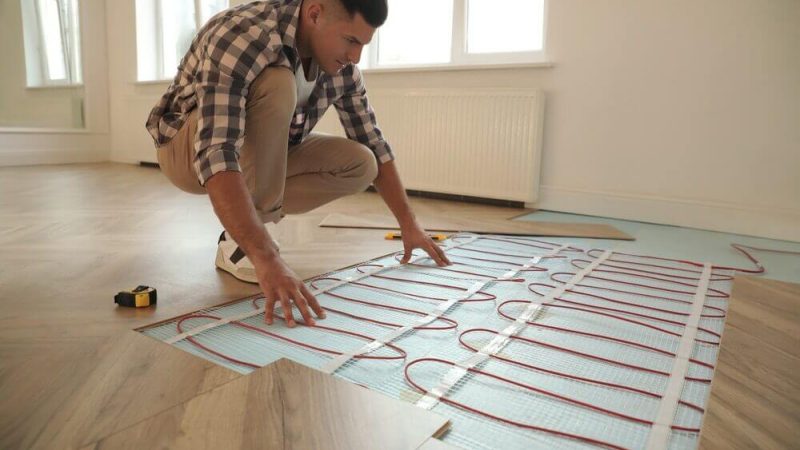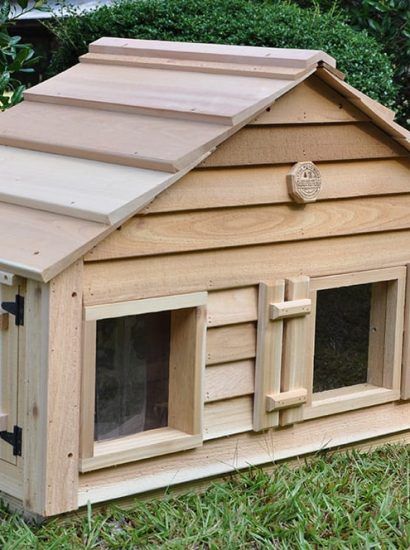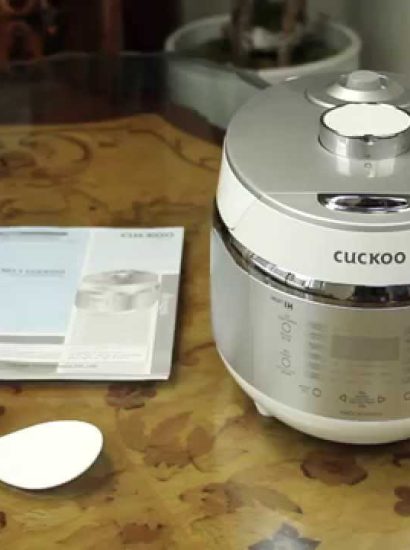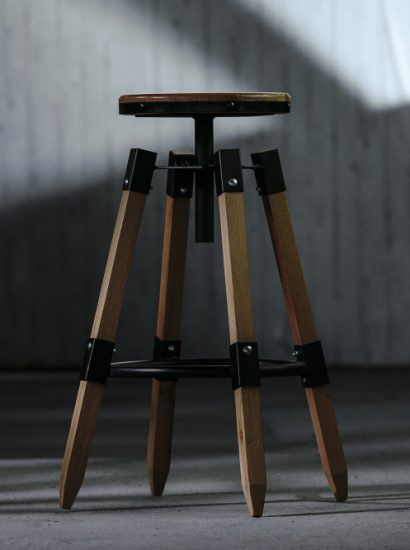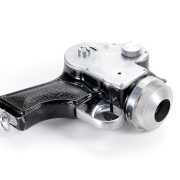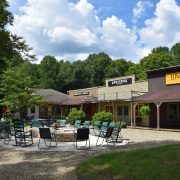Few things feel as luxurious as stepping onto a heated wood floor on a cold morning. Combining the timeless beauty of hardwood with the comfort of radiant heating, these floors bring both style and functionality to modern homes.
But many homeowners wonder: Is wood suitable for heated flooring? The short answer is yes—with the right system and installation approach. In this guide, we’ll explore everything you need to know about heated wood floors, from benefits and costs to best practices and maintenance.
How Does a Heated Wood Floor Work?
A heated wood floor uses radiant heating technology installed beneath the surface. The system warms the floor evenly, radiating heat upward into the room.
There are two main types:
- Electric Radiant Heating: Uses electric cables or mats installed under the wood.
- Hydronic Radiant Heating: Uses hot water tubes beneath the floor, heated by a boiler.
Both provide a consistent, energy-efficient heat source without noisy fans or visible radiators.
Benefits of Heated Wood Floors
Installing a heated wood floor offers multiple advantages:
- Comfort: Warm underfoot, especially in colder climates.
- Energy Efficiency: Radiant heating distributes heat evenly, reducing reliance on forced air systems.
- Aesthetics: No bulky radiators or vents needed.
- Improved Air Quality: No circulation of dust or allergens from vents.
- Luxury Appeal: Adds value to your home and enhances comfort.
Challenges of Heated Wood Floors
Despite the benefits, there are challenges to consider:
- Moisture Sensitivity: Wood can expand and contract with heat and humidity.
- Temperature Limits: Floors must stay below 80–85°F to avoid damage.
- Installation Complexity: Requires professional setup to prevent warping.
- Cost: Higher upfront investment than standard flooring.
Proper planning ensures these challenges are minimized.
Best Types of Wood for Heated Floors
Not all wood flooring reacts the same to heat. Choosing the right material is crucial.
Recommended:
- Engineered Wood Flooring – Best choice. More stable and resistant to warping.
- Hardwoods with Low Expansion: Oak, walnut, and cherry work well.
- Thin Boards (not thick planks): Allow heat to transfer efficiently.
Avoid:
- Solid Hardwood (especially wide planks): Higher risk of expansion and warping.
- Softwoods (like pine): More prone to damage from heating.
Engineered wood paired with radiant heating provides the best balance of beauty and durability.
Electric vs Hydronic Heated Wood Floors
Electric Radiant Heating
- Pros: Easy installation, great for smaller rooms.
- Cons: Higher electricity use in large spaces.
Hydronic Radiant Heating
- Pros: Energy-efficient for whole-house heating.
- Cons: More complex and expensive to install.
Best Choice: Electric systems for small projects, hydronic systems for large or whole-home setups.
Installation Process of Heated Wood Floors
The installation of a heated wood floor requires careful planning.
Step 1: Subfloor Preparation
- Ensure dry, clean, and level surface.
- Install insulation to improve efficiency.
Step 2: Radiant Heating System Installation
- Electric mats/cables or hydronic tubes are laid under the wood.
Step 3: Wood Flooring Placement
- Engineered wood flooring is recommended.
- Boards should acclimate to room temperature before installation.
Step 4: Temperature Calibration
- Slowly raise heat after installation to prevent sudden expansion.
Professional installation is highly recommended for safety and longevity.
Maintenance of Heated Wood Floors
With proper care, heated wood floors can last decades.
- Control Humidity: Keep indoor humidity between 30–50%.
- Use Thermostats: Prevent overheating and wood damage.
- Regular Cleaning: Sweep and mop with damp (not wet) clothes.
- Inspect for Gaps: Minor gaps may occur due to expansion—monitor regularly.
Cost of Heated Wood Floors
Costs vary based on system type, wood selection, and room size.
Average Costs (U.S.):
- Electric Radiant Systems: $10–$20 per sq. ft. installed.
- Hydronic Systems: $15–$30 per sq. ft. installed.
- Wood Flooring Materials: $5–$15 per sq. ft.
For a 200 sq. ft. room, expect $3,000–$6,000+ total.
Though expensive, heated wood floors can increase property value and long-term energy efficiency.
Safety of Heated Wood Floors
When properly installed, heated wood floors are safe. Key considerations:
- Temperature Control: Avoid overheating.
- Certified Systems: Use UL-listed heating mats/tubes.
- Professional Installation: Prevent wiring or plumbing issues.
Modern radiant systems include built-in safety features like thermostats and limiters.
Alternatives to Heated Wood Floors
If heated wood floors aren’t ideal, consider:
- Heated Tile Floors: More heat-resistant, great for bathrooms.
- Heated Vinyl or Laminate: Affordable and stable under heating.
- Carpet Over Radiant Heat: Provides comfort but insulates heat more.
Wood is beautiful, but alternatives may be better for certain spaces.
Conclusion
A heated wood floor blends natural beauty with modern comfort, making it a luxurious upgrade for any home. While installation costs and moisture concerns exist, the benefits—warmth, energy efficiency, and aesthetic value—often outweigh the challenges.
For best results, choose engineered wood over solid planks, pair with the right radiant system, and ensure professional installation. Done correctly, a heated wood floor can transform your living space into a warm and inviting sanctuary.
FAQs
1. Can all wood floors be heated?
No. Engineered wood works best; solid hardwood can warp under heat.
2. How warm can heated wood floors get?
Typically up to 80–85°F. Going higher risks damaging the wood.
3. Are heated wood floors expensive to run?
Hydronic systems are energy-efficient, while electric systems may cost more in large spaces.
4. Can I install heated wood floors myself?
DIY is possible with electric mats, but professional installation is highly recommended.
5. Do heated wood floors add home value?
Yes, they are considered a luxury feature that can increase resale value.
Also read: Coffee Carafe Glass: Complete Guide to Stylish and Functional Brewing

